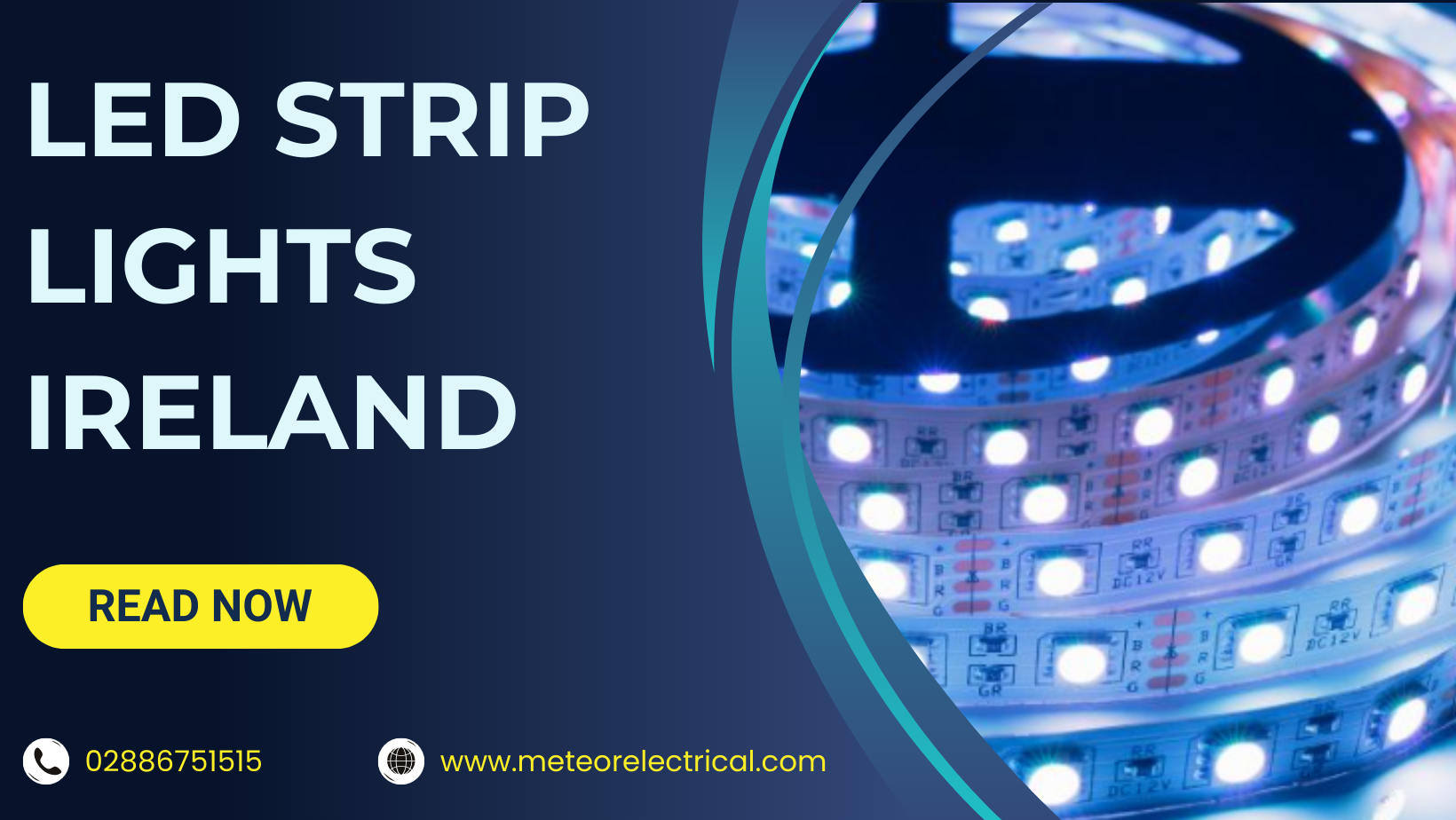LED Strip Lights Ireland
LED Strip Lights Ireland
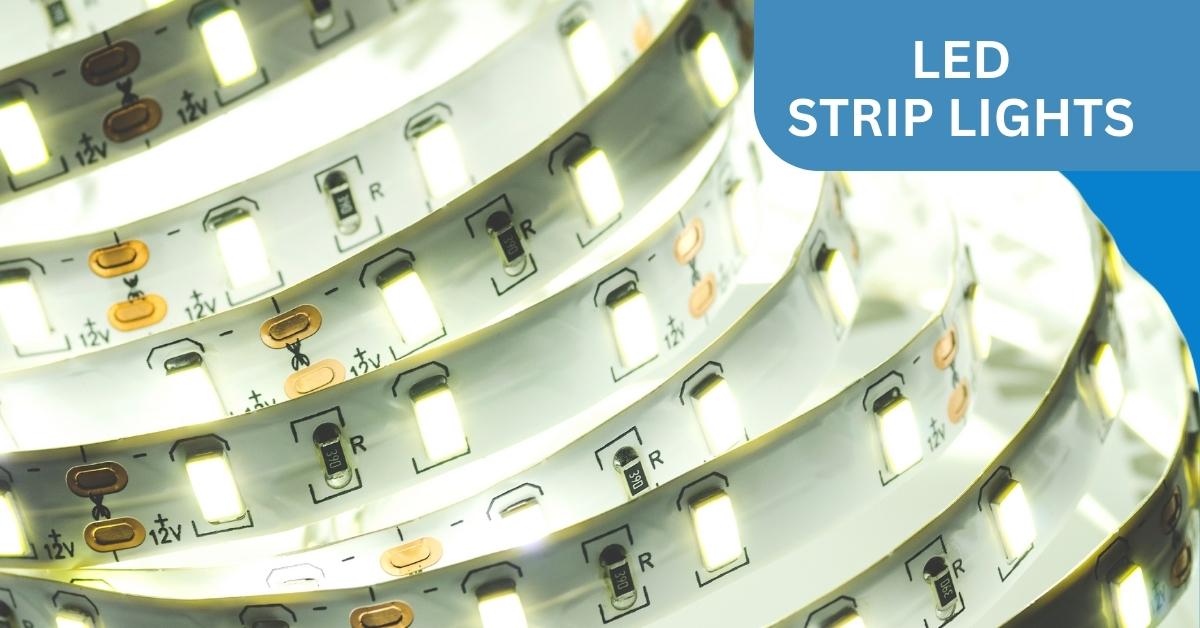
When it comes to lighting designs, the standard light bulb has long been the go-to choice. However, its versatility is somewhat limited, especially if you're looking to unleash your creativity and explore endless customization opportunities. Enter LED strip lights—a revolutionary option that offers unparalleled flexibility and design potential. Whether you're aiming to highlight specific architectural features of a room, create ambient lighting, or simply add a splash of color to your space, LED strip lights provide the perfect solution.
LED strip lights are not only adaptable in terms of application but also boast the latest in LED technology, ensuring you enjoy high-quality illumination without the burden of skyrocketing energy bills. Curious to learn more about these innovative lights? You've come to the right place. In this comprehensive guide, we'll delve into everything you need to know about LED strip lights in Ireland, helping you make informed decisions for your next lighting project. For further insights into LED technology and energy efficiency, check out Energy.gov's overview of LED lighting and The Illuminating Engineering Society's resources.
What Is LED Strip Lighting?
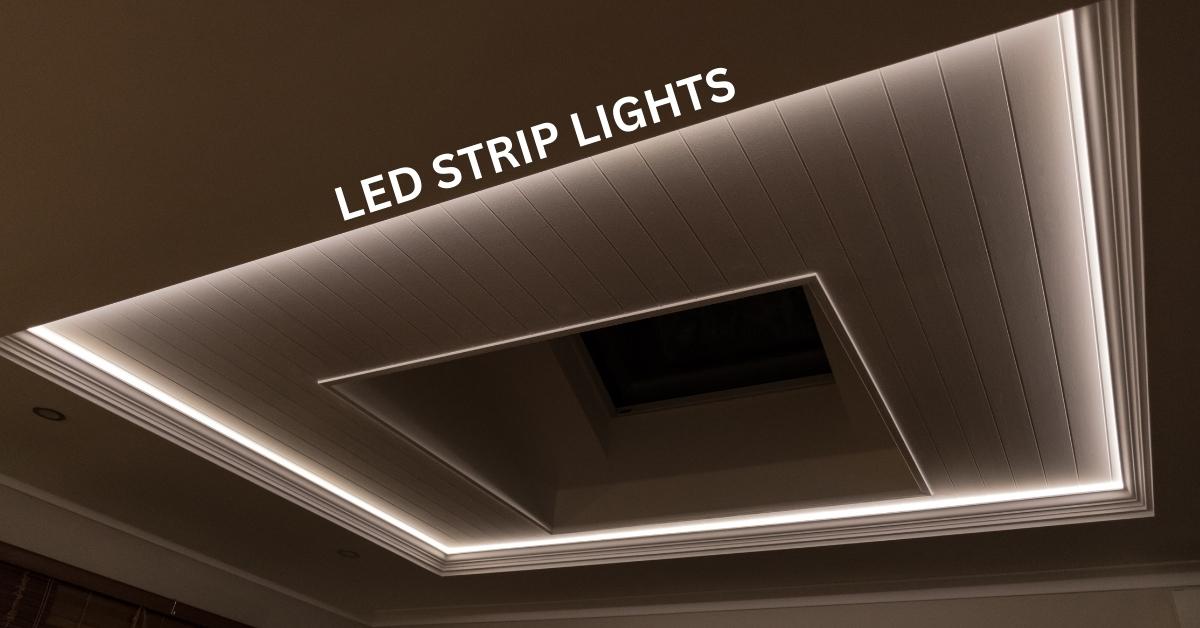
You might be familiar with traditional LED bulbs, but LED strip lighting takes this technology to the next level. Unlike standard bulbs that rely on tubes or sockets, LED strip lights consist of a flexible band embedded with a row of small LED bulbs. This design often includes an adhesive backing, making installation a breeze.
You can effortlessly attach LED strip lights to ceilings, walls, furniture, or any flat surface that complements the adhesive backing. However, it's essential to verify that the strip lights you choose come with this feature, as not all do. Some LED strip lights even come equipped with a handheld remote control, allowing you to switch the lights on or off from anywhere in the room. Additionally, these lights offer a wide spectrum of colors, enabling you to tailor your lighting design to your specific preferences.
For more detailed information on LED strip lighting applications, you might find Philips Hue's LED strip solutions useful.
What Are LED Lights?
LED lights, short for Light Emitting Diodes, represent the pinnacle of modern lighting technology. They are renowned for their energy efficiency and longevity, significantly outlasting traditional lighting options like incandescent and fluorescent bulbs. Due to their versatility, LED lights are now a staple in domestic, commercial, and industrial settings.
In homes, LED lights often come with standard base fixtures, making them a direct replacement for conventional bulbs. In workplaces and industrial environments, LED strips and linear fluorescent lamp formats are commonly used. The structural efficiency of LED lights plays a crucial role in their superior performance. Unlike incandescent bulbs that emit light in all directions and generate substantial heat, LEDs focus their energy solely on light production, making them far more efficient.
The evolution of LED lights has been remarkable. Early versions were primarily used in electronics, instrument panels, and simple indicators like pen lights. These early LEDs emitted light directionally, which was ideal for specific applications but limited their versatility in broader lighting solutions. Modern LEDs, however, have overcome these limitations by incorporating diffuser lenses and reflectors, allowing light to be distributed more evenly and mimicking the omnidirectional lighting of traditional bulbs.
For a deeper dive into the advancements in LED technology, visit The U.S. Department of Energy's LED resources.
How Do LED Lights Work?
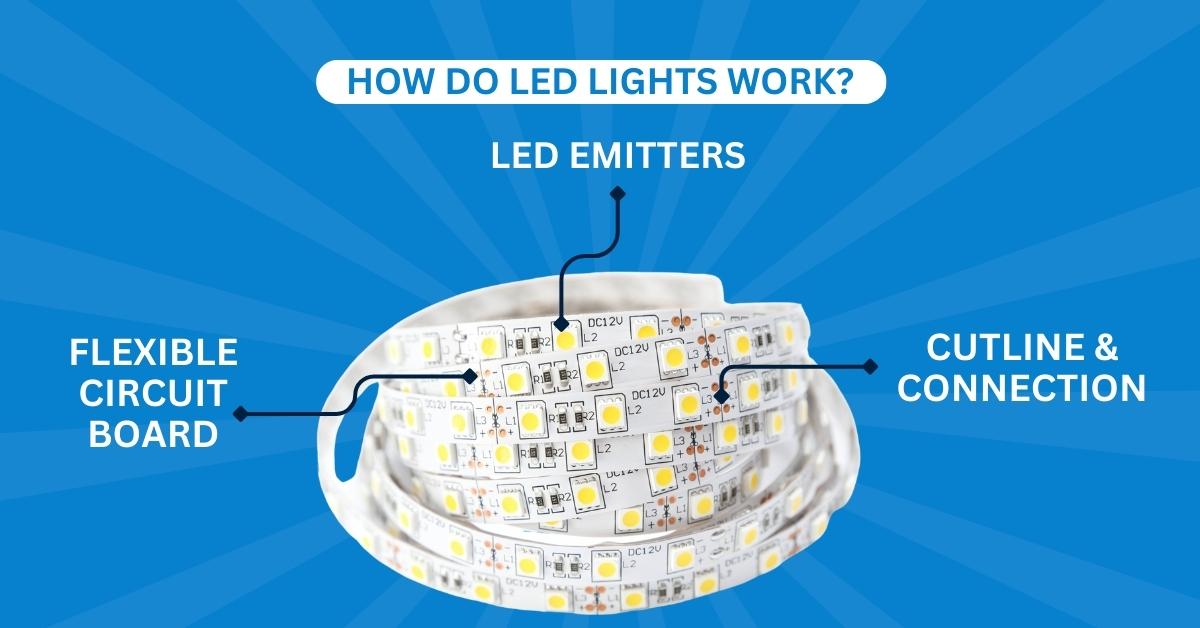
At the heart of LED technology is its ability to convert electrical energy into light with exceptional efficiency. Unlike traditional incandescent bulbs that waste a significant portion of energy as heat, LEDs channel almost all of their energy into light production. This efficiency is made possible by the semiconductor materials used in LEDs, which facilitate the direct conversion of electricity into light without harming the bulb's mechanical components.
LED lights also feature a heat sink component, which dissipates any residual heat generated by the LED chip. This ensures that the bulb maintains a long lifespan and operates efficiently without the risk of overheating. Consequently, LED lights consume minimal electricity, making them a cost-effective and environmentally friendly lighting option.
It's important to note that when evaluating LED lights, wattage is not the best indicator of performance. Instead, lumen output—which measures the total amount of visible light emitted by a source—provides a more accurate assessment of brightness. When shopping for LED strip lights, compare the lumen output to ensure you're getting the desired level of illumination.
Credit: Smart Home Solver
Why Are LED Lights Important?
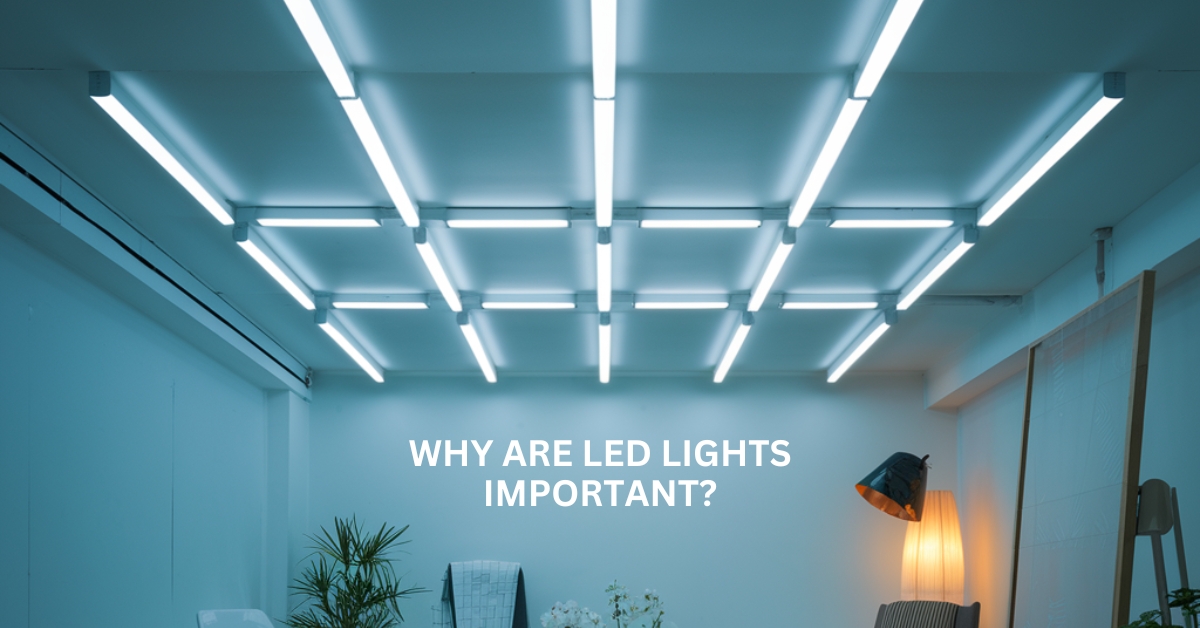
Investing in LED lighting is not just about enhancing the aesthetic appeal of your space; it's also a strategic move towards long-term energy savings. With rising energy costs, many consumers are seeking alternatives that reduce their electricity consumption without compromising on lighting quality. LED lights fit this need perfectly, offering a sustainable solution that lowers energy bills and minimizes environmental impact.
Traditional incandescent bulbs are notorious for their high energy consumption and frequent replacements due to their short lifespan. In contrast, LED lights consume significantly less energy and have a much longer operational life, making them a more economical choice over time. While the initial savings from switching to LED lighting might not be immediately apparent, the cumulative reduction in energy bills becomes substantial in the long run.
Moreover, the lower heat emissions from LED lights contribute to a safer living and working environment, reducing the risk of overheating and fire hazards. This combination of efficiency, safety, and durability makes LED lights a critical component in modern energy-saving initiatives.
What Are The Different Types Of Strip Lights?
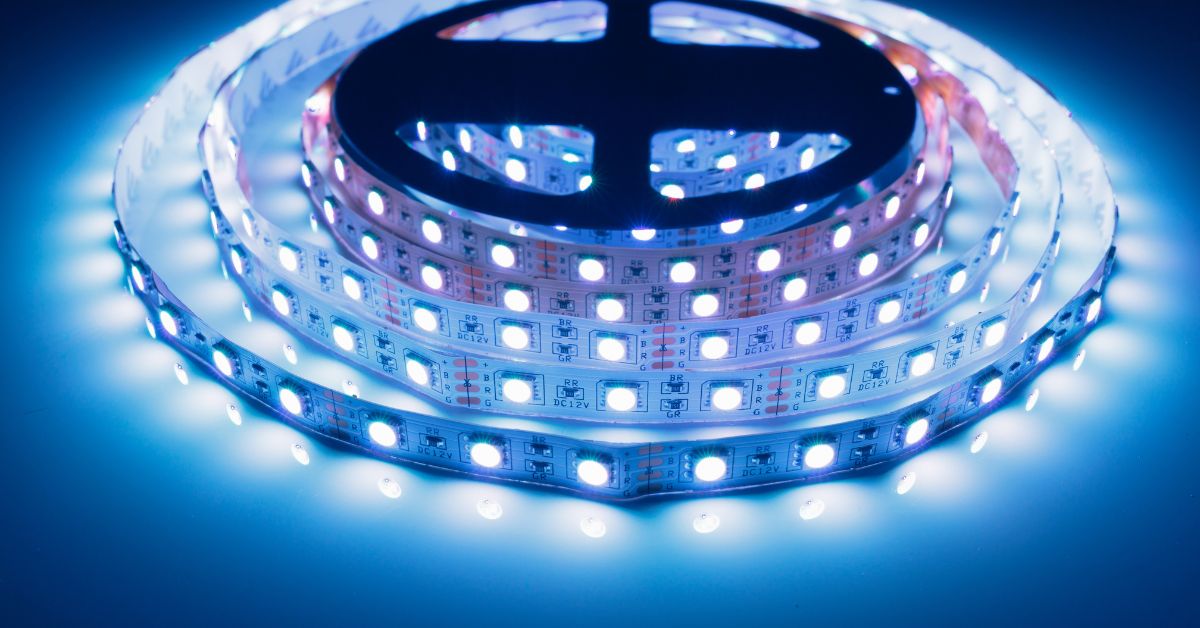
When it comes to selecting the perfect LED strip light, the variety can be overwhelming. Each type caters to different applications and aesthetic preferences. Here's a breakdown of the most common types:
Standard LED Strip Light
The standard LED strip light is the most prevalent type, characterized by its long, flexible strip of light bulbs. The length and density of these strips can vary based on your specific lighting needs. Designed with a single adhesive back, these strips can be easily affixed to any flat surface, such as alcoves, under cabinets, or around appliances.
Pros:
• Highly flexible and easy to install
• Ideal for under-cabinet lighting and recessed areas
Cons:
• Limited aesthetic appeal when exposed
• Best suited for flat surfaces only
LED Rope Lights
LED rope lights resemble standard strip lights but come with a flexible PVC encasement instead of an adhesive backing. This design allows for greater versatility in shaping and handling, making them suitable for outdoor applications like illuminating trees or hedges.
Pros:
• Durable and suitable for outdoor use
• Stronger illumination compared to standard strips
Cons:
• Less subtle, may not be ideal for hidden installations
LED Flex Strip Lights
Combining the best features of standard and rope lights, LED flex strip lights offer both adhesive backing and a sleek appearance. When turned off, the LEDs are hidden, providing a cleaner look that doesn't disrupt the interior design.
Pros:
• Aesthetically pleasing for visible installations
• Maintains a uniform appearance without visible bulbs
Cons:
• Generally not suitable for outdoor use
| Type | Features | Pros | Cons | Best Uses |
|---|---|---|---|---|
| Standard LED Strip | Single color or white, adhesive backing, flexible | Easy to install, energy-efficient, cost-effective | Limited aesthetic appeal when exposed | Under-cabinet lighting, accent lighting, recessed areas |
| RGB LED Strip | Multiple colors, remote or app-controlled, dynamic effects | Highly customizable, creates vibrant and dynamic lighting | More expensive, requires compatible controllers | Mood lighting, entertainment areas, parties, artistic displays |
| LED Rope Light | PVC encased, durable, weather-resistant | Suitable for outdoor use, strong illumination | Bulkier and less subtle | Garden lighting, facade lighting, outdoor events, pathways |
| LED Flex Strip | Hidden LEDs, sleek and seamless appearance | Aesthetically pleasing, uniform lighting | Typically not suitable for outdoor use | Visible interior installations, modern and minimalist designs, living rooms, bedrooms |
| High-Density LED Strip | Higher number of LEDs per meter, increased brightness | Brighter and more uniform lighting, ideal for detailed installations | Higher power consumption, more expensive | Commercial displays, retail lighting, detailed architectural highlights |
| Smart LED Strip | Wi-Fi/Bluetooth enabled, voice control integration | Advanced control features, programmable scenes | Requires smart devices or hubs, can be pricier | Smart homes, integrated lighting systems, automated environments |
How To Choose The Best LED Strip Lights?
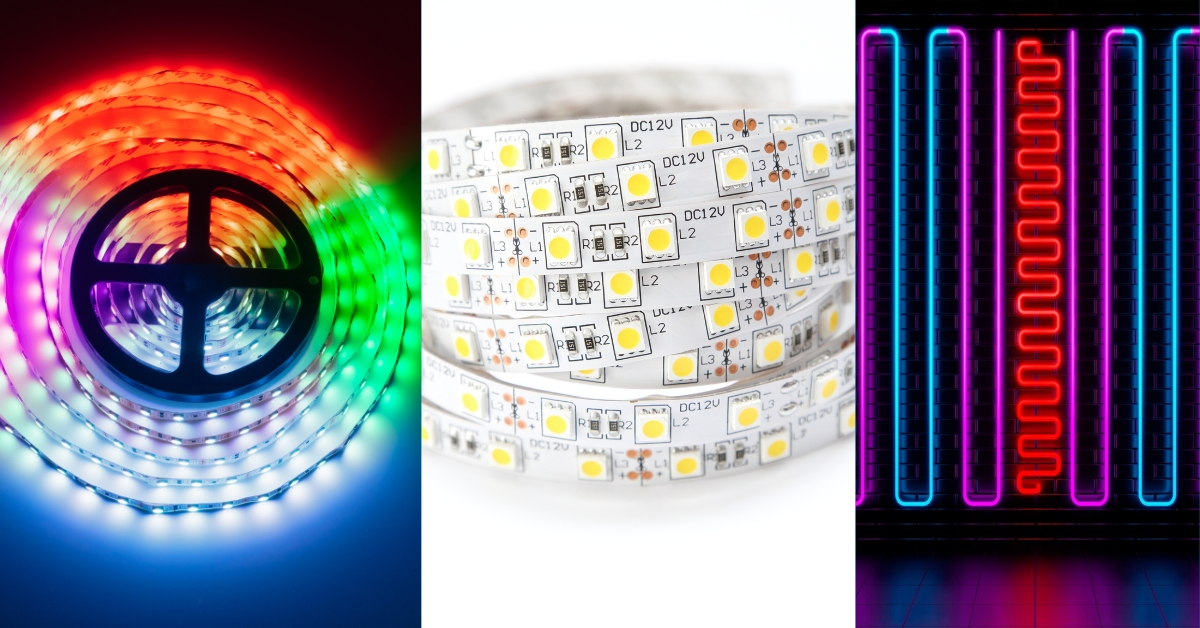
Selecting the right LED strip lights involves considering several key factors to ensure you meet your specific lighting requirements. Here's what to look for:
White Or RGB LED Strip Lights
White LED Strip Lights: These provide a single color of white light, available in various shades from warm to cool. The Kelvin rating on the packaging indicates the color temperature, with lower numbers representing warmer tones and higher numbers indicating cooler hues.
RGB LED Strip Lights: Equipped with red, green, and blue LEDs, RGB strips allow for a full spectrum of colors. They are perfect for creating dynamic lighting effects and mood settings, often controlled via a remote.
Brightness of the LED Strip Lights
Brightness is measured in lumens, and it's crucial to match the lumen output with your intended application. High-density strips offer brighter and more uniform lighting, while lower-density options provide a more subdued glow suitable for ambient lighting.
Density of LEDs Per Strip
The number of LEDs per meter affects both brightness and uniformity. Higher densities (e.g., 60 or 120 LEDs per meter) result in brighter and more evenly distributed light, ideal for general illumination, while lower densities are suitable for accent lighting.
Size of the LED Chips
LED strips come with different chip sizes, such as 5050, 3528, and 2835, each indicating the dimensions and brightness. For instance, 2835 chips are larger and more efficient, offering better brightness and longer lifespan compared to smaller chips.
Waterproof LED Strip Lights
For outdoor or high-humidity areas, ensure the LED strip lights have an appropriate IP rating (e.g., IP65 or higher) to withstand elements like rain, dust, and snow.
Installation Tips for LED Strip Lights
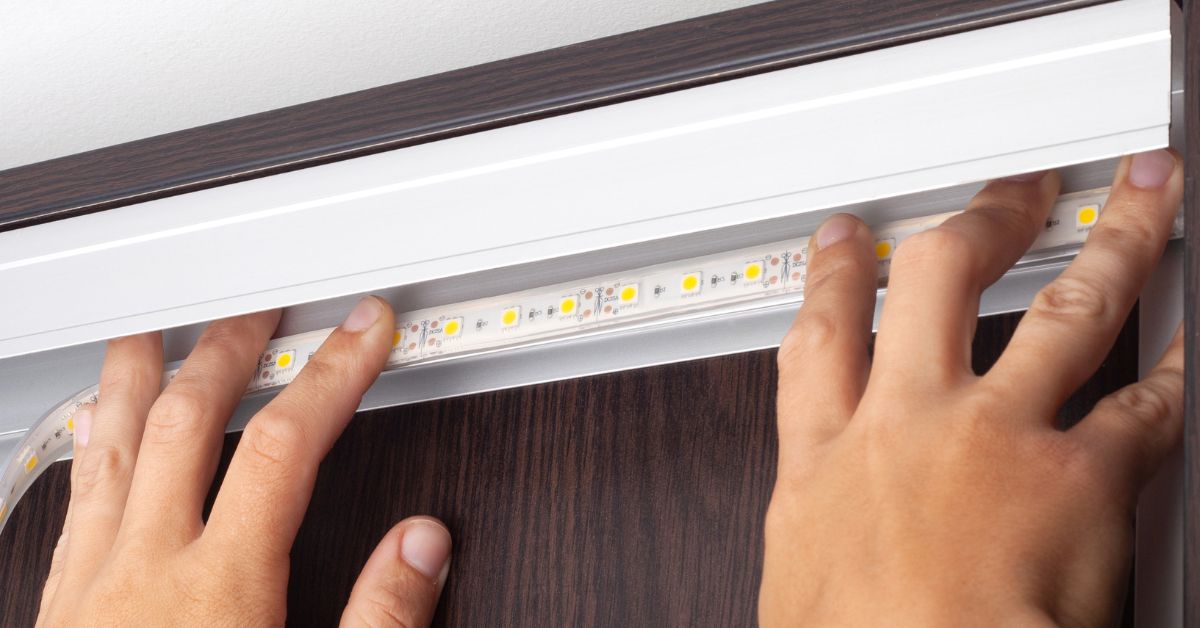
Installing LED strip lights can be straightforward, but following best practices ensures optimal performance and longevity:
1. Surface Preparation: Clean the surface thoroughly to ensure the adhesive backing sticks properly.
2. Measuring and Cutting: Measure the required length and cut the strip at designated cut points to avoid damaging the LEDs.
3. Power Supply: Choose a compatible power supply that matches the voltage and wattage requirements of your strip lights.
4. Connecting Strips: Use connectors or soldering for seamless connections between strips.
5. Mounting: Use mounting clips or channels for a more secure and aesthetically pleasing installation.
For detailed installation guides, refer to Philips Hue Installation Tips.
Maintenance and Longevity of LED Strip Lights
One of the significant advantages of LED strip lights is their low maintenance requirements. However, to maximize their lifespan:
- Avoid Overheating: Ensure adequate ventilation and avoid covering the strips with materials that trap heat.
- Regular Cleaning: Dust and clean the strips periodically to maintain brightness and efficiency.
- Secure Connections: Check and secure all electrical connections to prevent flickering or outages.
Credit: The Hook Up
Applications of LED Strip Lights in Ireland
LED strip lights are versatile and can be used in various settings to enhance both functionality and aesthetics:
Residential Use
• Under-Cabinet Lighting: Perfect for kitchens and bathrooms, providing task lighting without taking up space.
• Accent Lighting: Highlight architectural features like coves, shelves, or artwork.
• Bedroom Lighting: Create a cozy atmosphere with warm white or colorful RGB strips.
Commercial Use
• Retail Displays: Attract customers by illuminating products effectively.
• Office Spaces: Improve workspace lighting with energy-efficient solutions.
• Hospitality: Enhance the ambiance of restaurants, hotels, and bars with customizable lighting options.
Outdoor Use
• Garden Lighting: Illuminate pathways, trees, and outdoor furniture.
• Facade Lighting: Add visual interest to building exteriors with vibrant colors and patterns.
• Event Lighting: Ideal for parties, weddings, and other outdoor events.
How To Connect LED Strip Lights To A Power Source
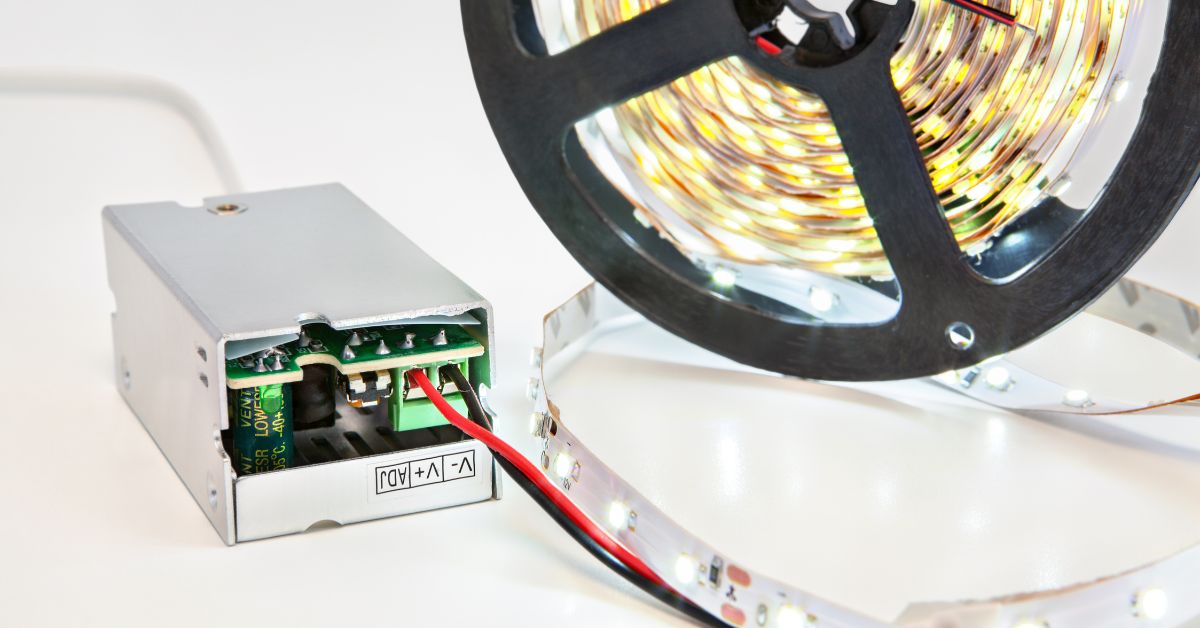
Once you've selected your perfect LED strip lights, the next step is connecting them to a reliable power source. Understanding the various connection options can seem daunting at first, but with a little guidance, it's a straightforward process.
Common Connectors Explained
Most LED strip lights utilize three common types of connectors: DC connectors, Morse plug connectors, and screw terminal connectors. Additionally, power supplies themselves often feature multiple connector types to accommodate different LED strip configurations. This means there are six potential combinations to connect your LED strips to a power source, depending on the specific connectors you have.
1. DC Power Receptacle to DC Connector Plug: If both your LED strip lights and power supply use DC connectors, simply plug them together. This is the most straightforward connection method.
2. Morse Plug to DC Connector: For strips with Morse plug connectors and power supplies with DC connectors, you may need an adapter or additional wiring.
3. Screw Terminal to DC Connector: Connecting screw terminal strips to a DC power supply might require specific connectors or adapters.
4. Morse Plug to Morse Plug: Direct connections between matching Morse plugs are typically simple, requiring no additional components.
5. Screw Terminal to Morse Plug: This connection might necessitate a converter or specialized adapter.
6. Screw Terminal to Screw Terminal: Secure connections using compatible screw terminal connectors can be made with minimal fuss.
Helpful Tips:
• Consult the Manual: Always refer to the installation manual provided with your LED strip lights for specific instructions and compatibility information.
• Use Quality Adapters: Investing in high-quality adapters ensures a stable connection and prolongs the lifespan of your LED strips.
• Professional Assistance: If you're unsure about the connections, it's wise to consult a professional electrician to avoid potential hazards.
For more detailed information on LED connections and power supplies, resources like HowStuffWorks offer comprehensive guides on electrical connections and safety.
How To Install LED Strip Lights
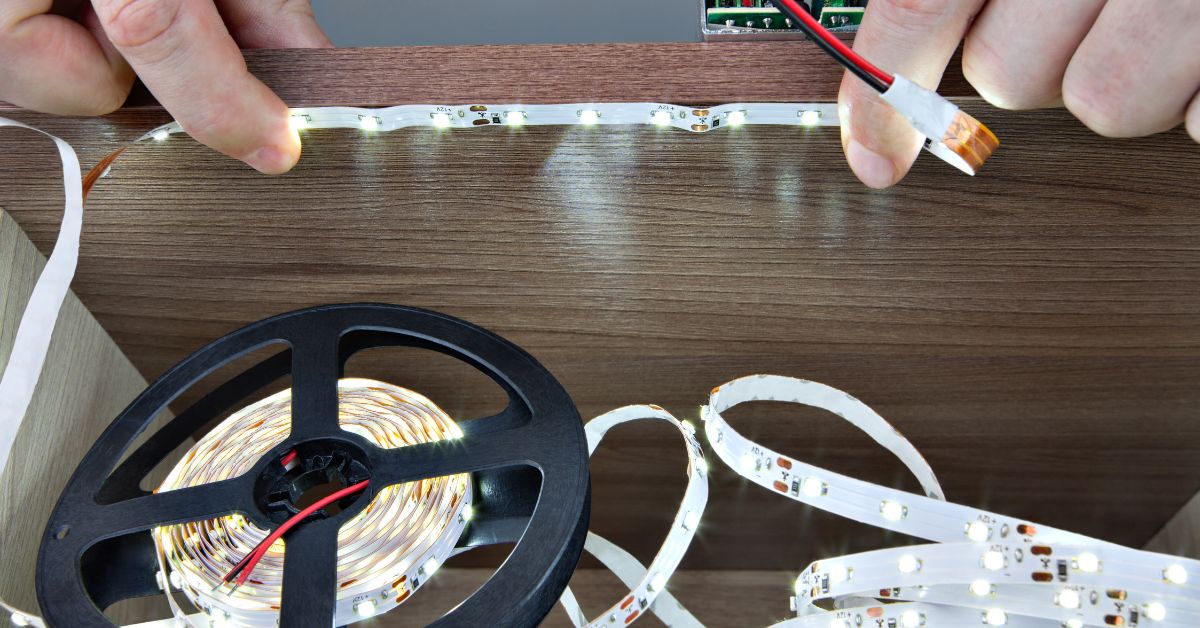
Installing LED strip lights is a manageable DIY project that can dramatically transform your space. Follow these simple steps to achieve a seamless installation:
1. Measure Your Space: Start by measuring the area where you intend to install the LED strips. Accurate measurements ensure you purchase the right length, preventing the need for excessive cutting or piecing together.
2. Unwind and Trim: LED strips typically come on reels. Unwind the necessary length and trim the strip along the designated cutting lines to fit your space perfectly. This step is crucial for a clean and professional look.
3. Prepare the Surface: Clean the installation area thoroughly. Use a mild cleaner to remove dust, grease, and moisture, ensuring the adhesive backing sticks effectively. A clean surface also helps in heat dissipation, maintaining the longevity of your LEDs.
4. Apply the Strip: Carefully peel off the adhesive backing, section by section, to avoid air bubbles and uneven adhesion. Press the strip firmly onto the surface, ensuring it lies flat and secure. For non-adhesive strips, apply double-sided tape designed for LED lighting to attach the strips.
5. Connect to Power: Once positioned, connect the LED strip to your chosen power source. Ensure all connections are secure and that the power supply matches the voltage requirements of your strip lights.
6. Test the Installation: Before finalizing the installation, test the lights. Turn them on manually or use the remote control to ensure all sections are functioning correctly. This step helps identify and rectify any issues early on.
Pro Installation Tips:
• Plan Your Layout: Sketching your installation layout can help visualize the placement and avoid mistakes during installation.
• Use Mounting Channels: For added protection and a polished finish, consider using aluminum mounting channels. These not only safeguard the strips but also enhance heat dissipation.
• Secure Wiring: Keep cables organized and out of sight using cable management solutions like clips or raceways, maintaining a tidy appearance.
For a comprehensive installation guide, Philips Hue's installation tips provide valuable insights and step-by-step instructions.
The Best LED Strip Lights in Ireland
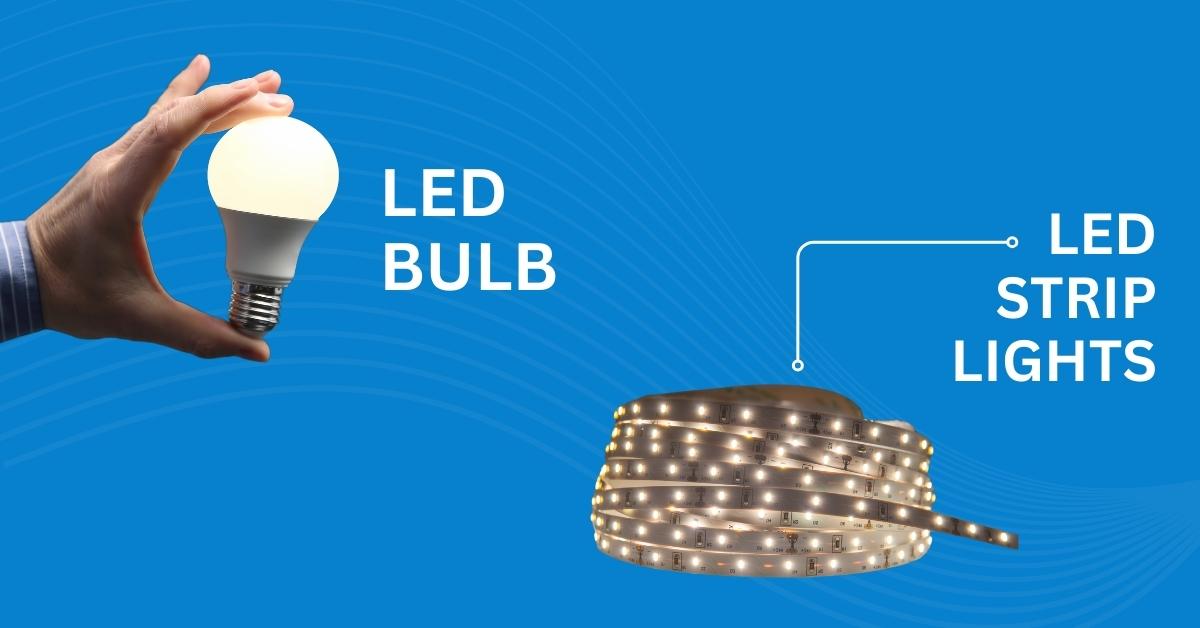
When it comes to sourcing top-notch LED strip lights in Ireland, Meteor Electrical is your go-to destination. Renowned for their extensive selection and superior quality, Meteor Electrical ensures that you find the perfect lighting solution tailored to your needs.
Why Choose Meteor Electrical?
• Exceptional Quality: Meteor Electrical offers LED strip lights that meet the highest industry standards, ensuring durability and consistent performance.
• Diverse Selection: Whether you're seeking standard, RGB, rope, or flex LED strips, Meteor Electrical has a wide range of options to suit every application—from domestic spaces to outdoor settings.
• Expert Guidance: The knowledgeable team at Meteor Electrical provides personalized advice, helping you select the right products for your specific requirements.
• Competitive Pricing: Enjoy premium LED strip lights at prices that offer excellent value for your investment.
• Comprehensive Support: From purchase to installation, Meteor Electrical supports you every step of the way, ensuring a seamless experience.
Visit Meteor Electrical Today
Ready to elevate your lighting game? Visit Meteor Electrical to explore their extensive range of LED strip lights. Whether you're enhancing your home, office, or outdoor area, Meteor Electrical has the ideal solution to illuminate your space with style and efficiency.
Conclusion
LED strip lights offer unparalleled versatility, energy efficiency, and aesthetic appeal, making them a superior choice for modern lighting needs. By understanding the various types, connection methods, and installation processes, you can effectively incorporate LED strips into any environment, enhancing both functionality and ambiance.
Meteor Electrical stands out as a trusted provider of high-quality LED strip lights in Ireland, offering a comprehensive range of products backed by expert support. Illuminate your space with confidence and creativity by choosing Meteor Electrical for all your LED lighting needs.
For more insights on energy-efficient lighting and sustainable living, visit Energy Saving Trust and the Sustainable Energy Authority of Ireland.
Frequently Asked Questions (FAQs)
1. What are the main benefits of using LED strip lights over traditional lighting?
LED strip lights are more energy-efficient, have a longer lifespan, and offer greater flexibility in design compared to traditional lighting. They produce less heat, provide a variety of color options, and allow for creative installations in both residential and commercial spaces.
2. Can LED strip lights be used outdoors in Ireland's weather conditions?
Yes, LED strip lights can be used outdoors provided they have an appropriate IP rating. For outdoor installations, it's recommended to choose LED strips with an IP65 rating or higher to ensure they are resistant to rain, dust, and other environmental factors commonly experienced in Ireland.
3. Are LED strip lights dimmable, and how can I control their brightness?
Many LED strip lights are dimmable and can be controlled using remote controls, smartphone apps, or wall-mounted switches. Some advanced models also offer features like color changing and programmable lighting effects, allowing you to customize brightness and ambiance to suit your preferences.
4. How long do LED strip lights typically last, and what maintenance is required?
LED strip lights typically have a lifespan of up to 50,000 hours, significantly longer than traditional bulbs. They require minimal maintenance—mainly ensuring that the surfaces are clean and free from dust. It's also important to check and secure electrical connections periodically to maintain optimal performance.
5. Where can I purchase high-quality LED strip lights in Ireland, and do you offer expert installation services?
Meteor Electrical is your trusted provider for high-quality LED strip lights in Ireland. We offer a wide selection of LED strip lighting solutions tailored to various applications, from residential to commercial. Our team of experts provides personalized advice and professional installation services to ensure your lighting project is a success. Visit Meteor Electrical to explore our range and get expert

